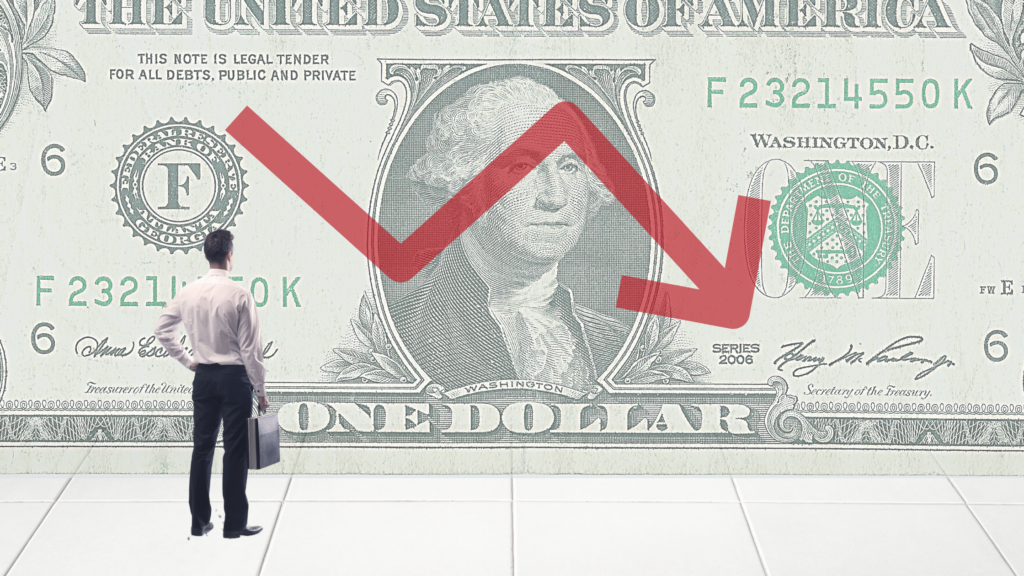It’s been said that life imitates art – or was it, art imitates life? This is one of those deep philosophical questions in life. And I had the joy of debating it recently with Phoebe on our way to opening day for the Red Sox last week. Now finishing up her senior year in high school and then onto greater things as she begins to conquer the next chapter of life at Worcester Poly Tech. On our way into Fenway, she brought up an art class that she took a few years back and we chatted about colors – in particular, the topic of inverted colors. Did I know that the opposite of the color red is green? Well, I do now. Red and green are colors that appear opposite of each other on the color wheel.
Hmmm . . . she got me thinking.
Interestingly enough, the term “inverted” is a hot topic in the world of finance today too. By this I’m talking about something called an “inverted yield curve”, and it’s a pretty big deal. It just might signify the possibility of an impending recession here in America. In particular, it’s the U.S. Treasury yield that has inverted, and this is often a warning sign.
So, what is an inverted yield curve. Investopedia describes the term “yield” as the annual net profit that an investor earns on an investment. The interest rate is the percentage charged by a lender for a loan. An inverted yield curve describes the unusual drop of yields on longer-term debt below yields on short-term debt of the same credit quality.
Think of it this way. A yield curve is a line that plots yields (interest rates) of bonds of the same credit quality but differing maturities (duration). The most closely watched yield curve is U.S. Treasury debt. Historically, protracted inversions of the yield curve have preceded recessions in the U.S. An inverted yield curve reflects investors’ expectations for a decline in longer-term interest rates as a result of a deteriorating economic performance.
An inverted yield curve occurs when short-term debt instruments have higher yields than long-term instruments of the same credit risk profile. This is a fairly unusual occurrence, and it tends to reflect bond investors’ expectations for a decline in longer-term interest rates. Longer term debt, such as 10-year and 30-year government bonds, usually have higher yields than short-term debt such as two and five-year bonds. The idea here is that investors are compensated for keeping their money locked up for longer.
Usually, the yield curve slopes upward, reflecting the fact that holders of longer-term debt have taken on more risk. A yield curve inverts when long-term interest rates drop below short-term rates because investors expect short-term rates to decline in the future, typically as a result of impaired economic performance. Such an inversion has served as a relatively reliable recession indicator in the modern era. Because yield curve inversions are relatively rare yet have often preceded recessions, they typically draw heavy scrutiny from financial markets participants.
An inversion can mean that investors expect central banks will need to cut interest rates in response to a recession, perhaps after tightening monetary policy too quickly. Interestingly enough, the U.S. Federal Reserve is expected to raise interest rates as many as eight times this year. Folks, we follow the U.S. Treasury yield curve because it has been a reliable predictor of recessions in the world’s largest economy.
As of this writing, yields on five-year Treasuries is around 2.64 percent, compared with 2.58 percent for 30-year Treasuries. This hasn’t happened since 2006. We also want to keep an eye on the difference between two-year and 10-year Treasuries, which is also on the brink of inverting. The inversion of two-year and 10-year Treasury yields has been followed by a US recession every time it has happened in the last 50 years. The recession typically follows within 18 months.
Now, while an inverted yield curve has often preceded recessions in recent decades, it does not cause them. Rather, bond prices reflect investors’ expectations that longer-term yields will decline, as typically happens in a recession. And a yield curve that inverts for an extended period of time appears to be a more reliable recession signal than one that inverts briefly, whichever yield spread you use as a proxy.
But luckily, recessions have historically been a rare enough event that we haven’t had enough to draw definitive conclusions. As one Federal Reserve researcher has noted, “It’s hard to predict recessions. We haven’t had many, and we don’t fully understand the causes of the ones we’ve had. Nevertheless, we persist in trying.”₁
So, what can you do to protect yourself from a potentially pending recession? Folks, as I tell my clients; no one can predict the markets, but it does not mean you shouldn’t be prepared. If you have not prepared, now would be the time to make sure you have a downside risk mitigation program as the nucleus of your retirement system. One that’s specifically designed to help you weather the impact of recessions, crises, and other economic events, whatever the cause. We can’t control the markets, or an inverted yield. But we can prepare for the possibility of economic upsets with some educated planning to help us realize more of the green and less red in our pockets and our portfolios. You know, we had a nice day at the Sox; I am going to miss this kid next year.
So as always – be vigilant and stay alert, because you deserve more!
Have a great week.
Jeff Cutter offers investment advisory services through Cutter Financial Group, LLC, an SEC Registered Investment Advisor with offices in Falmouth, Duxbury, and Mansfield.
Jeff can be reached at jeff@cutterfinancialgroup.com. Insurance products, including annuities, are offered through Cutterinsure, Inc., (MA insurance license #2080572). Cutter Financial Group and Cutterinsure are affiliated and under common control but offer services separately. Members of Cutter Financial Group’s management receive revenue directly from Cutterinsure. Any compensation received is separate from and does not offset regular advisory fees. Cutter Financial Group does not charge advisory fees on any insurance products. We do not offer tax or legal advice. Always consult with qualified tax/legal professionals regarding your own situation. Investing in securities involves risk, including possible loss of principal. Insurance product guarantees are backed by the financial strength and claims-paying ability of the issuing company. This article is intended to provide general information. It is not intended to offer or deliver investment advice in any way. Market data and other cited or linked-to content in this article is based on generally available information and is believed to be reliable. Please contact us to request a free copy of Cutter Financials’ Form CRS, Form ADV 2A and applicable Form ADV 2Bs.1. https://tinyurl.com/2p8f2unr








